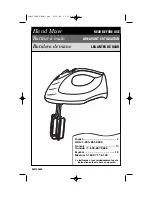
9
Revision C • 12/05
H
A
R
R
I
S
C
O
R
P
O
R
A T
I
O
N
Connect analog or digital audio devices (CD players, rout-
ers, VistaMax outputs, recorders, etc.) to the remaining un-
used inputs (J1, J2 and J3 for analog devices; J13, J14 and
J15 for digital devices). If any analog devices use unbalanced
-10 dBv outputs, set the appropriate rear panel slide switch to
the -10 dBv position (see the rear panel drawing on page 7 for
switch setting details).
If a talkback system is being used, connect incoming talk
audio to pins 1, 2, 3 of J6. Connect the outgoing talk audio
wiring to pins 4, 5, 6 of J9.
Connect an analog External Monitor signal to J4 and con-
nect powered monitor speakers to J7. The Program 1 analog
stereo output is on J8 and the AES-3 digital output is on J16.
The Program 2 analog stereo output is on J11 and the AES-3
digital output is on J17.
Logic Interface
All logic inputs and outputs use the same type of circuits as
shown in block diagram form for J29, below. To activate in-
puts (like Ext. Talk on J29, pin 7), jumper the Activate (+)
input to a + voltage source (any +5 Volts pin can be used with
an isolated control panel). On J29, pin 1 can be jumpered to
pin 2. Inputs are activated by a logic low, so a “Talk to SMX
d”
push switch (SPST) connects to pin 7 and 8 (Ground). The
Talk Tally output (pins 4 and 5) can be used to control an
audio relay for switching in the talk audio output (on J9) to
an external location.
Pins 10 and 11 connect to a dry-contact input warning lamp
interface (like the Harris WL-2). If the warning interface re-
quires high or low logic, and it is isolated, then J29 pin 12 (+5
Volts) or J29 pin 9 (Logic Ground) can be used to supply the
proper logic through J29 pins 10 or 11, otherwise source
ground or power from the warning lamp interface.
J33 has six 250 msec start command contact closures for
CD players and other remote-start devices. Channel 2 through
7 have separate outputs. Each output is identical to the Talk
Tally connection on J29 (a solid-state dry contact). There is
also a timer reset output, for resetting an event timer, on J33.
Internal DIPswitch DS2 Settings
DS2 has eight switches. DS2-1 thru -4 are not used in SMX
d.
Table 2 (Peak Level Set), shown above, details the DS2 switch
settings.
DS2-5 and DS2-6 set the signal level where the blue peak
LEDs turn on. The default setting is 0 dB, but the level can be
set to 0, -2, -4, or -6 dB below full scale.
DS2-8 sets the meter display format. When DS2-8 is set to
on, then only the average audio level is shown (a solid bar
indicating average level). When DS2-8 is set to off (the default
setting) both average and peak indications are shown.
With DS2-8 set to off, DS2-7 becomes active. It sets whether
the peak indication is held for about one second, or whether it
immediately starts to decay. The peak indications always de-
cay at about 1 segment per 1/4 second.
To identify each channel’s source, remove the channel on/
off button lens by prying up on the top edge. Use clear label
tape or clear mylar to label the channels. Place the trimmed
mylar onto the buttoncap and snap the lens back in place. A
Word® template (Harris # 71-1961) is available for down-
loading at the customer support FTP site:
ftp://ftp.pre.com/
customer_support/RMXdigital_console. Log in (username) is
customer.
Password is
pacific
.
Notes:
Opto-Isolator inputs can 5 to +40 VDC logic
Opto-Isolator outputs can handle up to 60 volts or 350 mA
7
1
SMXd Inter
nal Logic
Ext. Talk Command (-)
Activate Ext. Talk (+)
J29
J29
5
Talk Tally
4
Talk Tally
J29
J29
Ground
Ground
6
8
J29
J29
12
3
2
+5 Volts
+5 volts
+5 Volts
+5 Volts
J29
J29
J29
Ground
9 J29
10
WarningTally
11
Warning Tally
J29
J29
J29 Logic Block Diagram




























